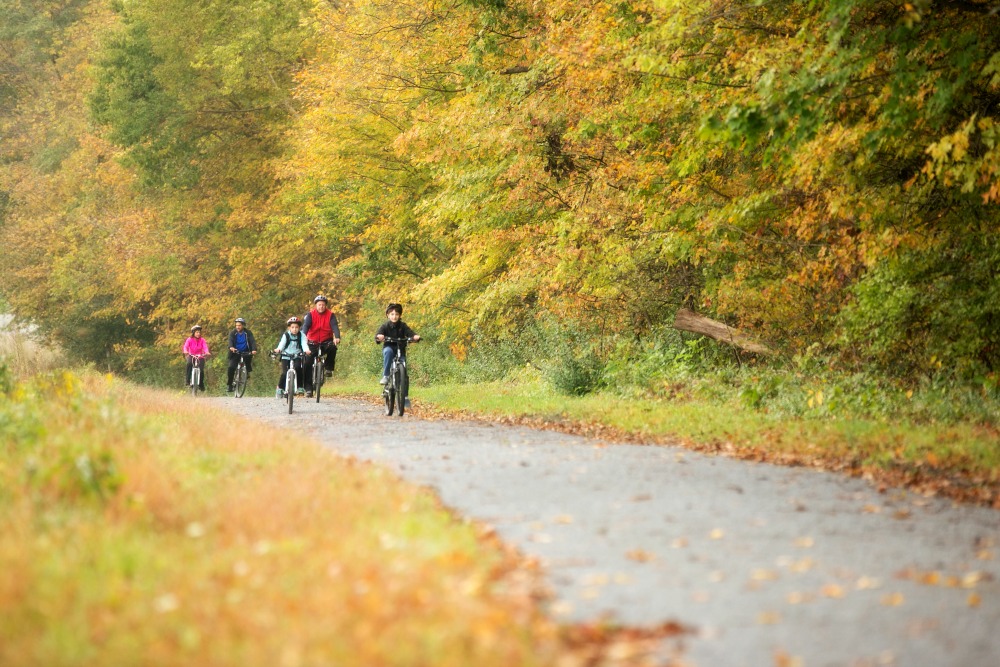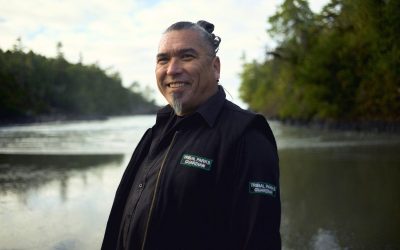People of the Pocono Mountains know the value of tourism. One in three residents has a connection to the travel and hospitality industry, and this four-county region of the U.S. state of Pennsylvania plays host to 25 million visitors per year.
Locals recently became even more connected to tourism through an innovative campaign in partnership with National Geographic and Pocono Mountains Visitors Bureau (PMVB), the regional destination marketing organization (DMO). The PMVB recently helped forge a coalition beyond state and county lines to collect and share local stories that depict the natural beauty found along the scenic, wild Delaware River that runs through the area.
Carl Wilgus, President & CEO of the Pocono Mountains Visitors Bureau, participated in Destination Think Forum 2016 in New York City, where destination leaders met to discuss the industry’s greatest challenges, including trends around community and collaboration. We asked Carl to describe the PMVB’s partnership with National Geographic and tell us why it’s important for both residents and the tourism industry.
David Archer, Destination Think: Can you describe PMVB’s recent partnership with National Geographic and how residents became involved?
Carl Wilgus, President & CEO, Pocono Mountains Visitors Bureau: This geotourism project is different than other kinds of National Geographic programs because usually, when you work with National Geographic, they’ll bring in their photographers and their writers and then they tell your story through their eyes.
But this project turns that idea around in the sense that it asks locals to submit the images, pictures and storylines to describe the communities in which they live and work. They share the special places they like to see and things they like to do. This helps the visitor connect more closely with the local texture, attitudes and atmosphere. So they get to see a destination from the perspective of the people who live here, work here and are part of the fabric of the community.
That’s what enthralled me about bringing that program into the Pocono Mountains. Plus, we’ve made the effort to connect across the Delaware River with counties in New Jersey and New York, to bring together a new destination, in certain ways.
If you look at the history of this country, you can see that the rivers were the highways, the interstates. People lived along the river, they travelled along the river, commerce was done along the river and everything flowed from there. Then, as we got sophisticated and built bridges and highways, we crossed the rivers and they became a demarcation line between states or between communities. We’re trying to return that to the way it used to be.
It’s interesting that your project spans a number of regions. Can you describe your organization’s role within that partnership structure?

Carl Wilgus, President & CEO, Pocono Mountains Visitors Bureau
We’ve developed a steering committee that oversees the effort of the program. The National Geographic Society is involved for the first year or two with developing the website and the database, but it’s up to the people who live here and work here to manage and take the program to its next steps. We’re working with the National Parks Conservation Association, which is the backbone of this geotourism region in the Middle Delaware National Recreation Area and the Upper Delaware National Recreation Area. With the support of the parks, we’re trying to draw these entities together and work in concert with one another.
The Pocono Mountains Visitors Bureau is the largest DMO of the new nine-county region, so we’ve stepped forward and have pledged to take a leadership role in the maintenance and the operation of the website moving forward, and we will help drive the marketing of the destination for this new geotourism project.
How did you collect the stories from residents?
Through our geotourism stewardship council, we worked with National Geographic and with the National Parks Association. We held meetings in each of the nine counties, inviting the industry to come out and learn about the nomination process. In most cases, it began as a self-nominating process. For example, some business people saw the opportunity to tell their stories, with the intent of developing some commerce along the way.
National Geographic suggested, based upon its previous experiences, that if we had between 350 and 400 nominations by the time we launched the website that we would do pretty well. We had over 650 when we launched in May 2016. So we overperformed, but I wasn’t too surprised by that.
Why weren’t you surprised?
Because I think there’s a compelling story here. People understand that tourism is an important business in the region. They also understood the opportunities that this project presented for them to get their story out, to get their message out to a consumer who was predisposed to that kind of experience.
Why is it important for your destination to involve residents in its marketing?
Well, when you only have 350,000 residents trying to serve 25 million visitors, you need the residents behind you, you need them supporting you, and you need them to be enthusiastic about what you do. So to a large extent, it’s important that our residents are engaged and that they support our industry.
How are you measuring success as the program evolves to its next stage?
We’re working on a three-year strategic plan which has a marketing component. Obviously, part of that has to do with the continued growth of the number of partners in the system. We had 653 partners at launch, so how many more do we want to grow? I think we’re projecting to increase that participation by 10 percent over the first year and by 15 percent over the next year.
We’re looking at those kinds of numbers, and we’re also going to be tracking the amount of people that visit the site and access the information via Google Analytics. So those are two of the main factors.
Another big portion of this program reaches beyond marketing and into sustainability. How do we maintain a quality experience? How do we maintain our destination as a highly valued resource? What kind of educational components or activities can we do as a group to sustain and actually improve the destination in terms of quality experiences for a visitor?
We plan to manage those kinds of educational elements, tracking how many components we deliver, how many people become partners or participate with us, and report those numbers back as part of our process.
Do you have any advice for other DMOs who might embark on a project that involves their residents in the destination’s storytelling?
There isn’t necessarily any one model that’s going to fit for all purposes, but I think that if you want to be a successful and sustainable destination, you’ve somehow got to figure out how to get the residents of your area involved in that process, so that they engage in it and find value and a reward from what you’re doing.
Otherwise, you will find yourself at odds with your own community. It’s hard to do your work when you don’t have the support of the locals. And if you don’t have the support of the locals, it’s almost impossible to get the support of the policy makers – the business community, or the legislators or elected officials. The residents play a very powerful role in helping the DMO be successful.
Related reading: VISIT FLORIDA explains why increasing word-of-mouth referrals is an essential priority
Destination Think leads strategic workshops that help DMOs improve guest experience, visitor empathy and word-of-mouth promotion. Contact us today to learn more.
Featured image credit: Pocono Mountains Visitors Bureau









0 Comments